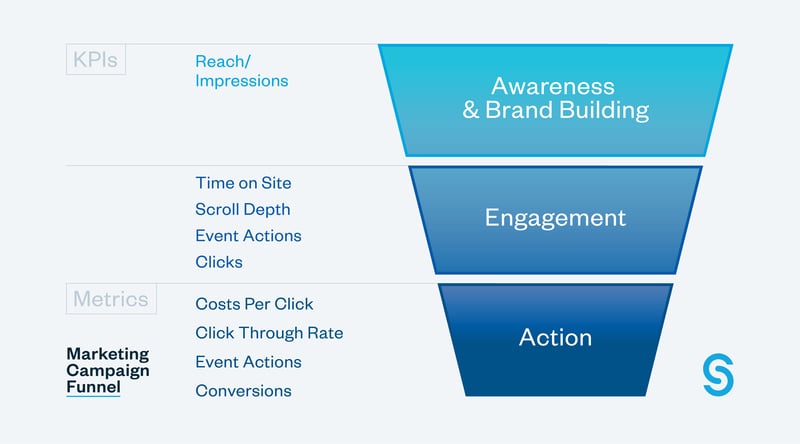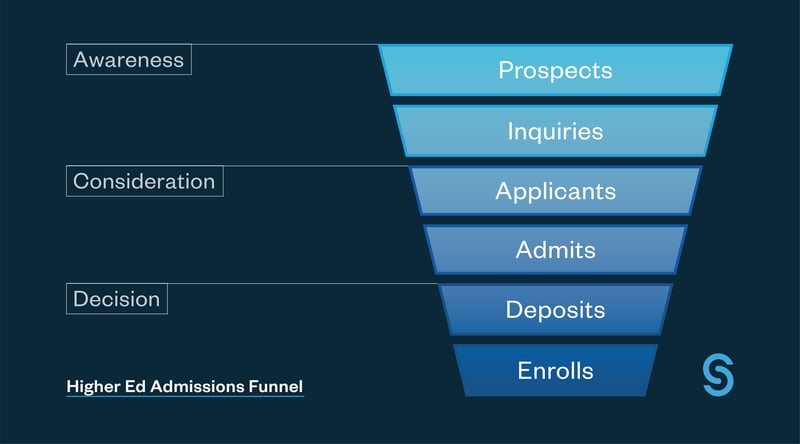It was the best of times; it was the worst of times as universities stare down the 2025 enrollment cliff. In preparation, some institutions are beginning to see the importance of integrating systems to provide better brand experiences as they vie for students in an ever-changing prospect pool. Yet, many institutions have been slow to introduce collaboration between two critical departments: marketing and admissions.
Despite many similarities like direct communication and first impressions for students, a common silo remains: recruitment and admissions are arguably the most personal touch points a university will make, yet brand strategy remains sequestered within marketing.
There is plenty of opportunity between these two teams to help build and create positive brand experiences. So, how can higher ed marketing and admissions leaders help remove walls internally to integrate these efforts?
Sharing a Strategy Tool
A frequent commonality between marketing and admissions departments is the use of a funnel. No, not a funnel for guiding liquids but one for guiding strategy. If you're a higher ed marketer, you've probably seen one like this:

And if you’re in admissions, you’ve probably seen one like this:

But how often do these departments share their funnels and strategies? If you look closely, you'll see that the marketing and admissions funnels are essentially the same. Each has three distinct stages; though they have slightly different names, they are similar. Not to mention, the audience for each section of the funnel significantly overlaps.
Let's talk about commonalities and tactics for each stage of these funnels.
Building Brand via Awareness
The awareness stage of the admissions funnel is for prospective students to ask questions about what they want and need from an institution and what path they want for their future. At the same time, marketing is creating content that is easy to discover and consume by these students. But what are the best topics and subjects to produce? As higher ed marketers, this is the time to create educational content and establish the university as an organization with its finger on the pulse of what students want.
Who knows prospective students better than your admissions team?
During monthly brainstorming sessions, leaders should encourage their marketing teams to talk to admissions specialists. Ask what conversations they're having with prospective students. What questions are students asking this time of year, and what behaviors do they see? Marketing can create digital content that speaks to those questions and behaviors. Sharing content calendars across teams can also aid long-term planning by allowing both departments to see how themes overlap yearly. These themes will help each department provide valuable resources at the right time for students.
Engaged and Considering
During the consideration stage of admissions, prospective students have identified their problems and are now looking for solutions. They have also shared contact information that unlocks new communication paths for the institution: email addresses for comms flows, handles for social media content, and demographics for ad targeting. Essentially, students are now experiencing information overload from all angles.
It is ineffective for marketing and admissions to push out different messages that compete with the noise from other universities. Receiving strategic, unified messaging will be more impactful than a sea of scattered and unconnected communications.
Alignment is key for both departments - think surround sound. Marketing and admissions should agree on their institution's priority messages and combine each department's efforts to create amplification. In addition, both teams should also strategize the cadence of outreach. How much communication feels like too much? How much feels like too little? Marketing and admissions must be on the same page about how many touchpoints they're creating to develop an information flow that is "just right."
Actions Sparking Enrollment
Emotion and connection play a vital role during the action/decision phase of the funnel. Students are now admitted and weighing their final choices from a shortlist. Experiences like campus tours, campus events, and faculty meetings need to be positive so your institution stands out among the rest.
It's no longer about the talk. It's about action.
Admissions should strategize planned experiences, outline why these experiences are important, and consider what kind of proof point they provide. It's then up to marketing to promote the value of the experience, garner interest, and create FOMO (fear of missing out) in both digital and physical spaces. In this stage, collaboration between marketing and admissions can help build momentum by using robust storytelling to back up all of your institution's promises.
A Shared KPI
At the end of the day, marketing and admissions share a common KPI - the number of enrolled students. So, why aren't marketers and enrollment specialists working together? Just because the tools for strategy are siloed-shaped doesn't mean it's a good idea for departments to be.
With many opportunities to integrate for better results, marketing and admissions can stand together as a unified front with an integrated strategy rooted in brand experiences and proof points.
—
Safaniya “Safy” Stevenson is Associate Director of Integrated Strategy and is leading the expansion of marketing and experience services with the agency’s over 300 higher ed partners. She is always finding opportunities to help clients push the envelope in their digital communications through omnichannel strategies. Safy currently resides in Raleigh, North Carolina with her son and 20+ plants.
—
Safaniya “Safy” Stevenson is Associate Director of Integrated Strategy and is leading the expansion of marketing and experience services with the agency’s over 300 higher ed partners. She is always finding opportunities to help clients push the envelope in their digital communications through omnichannel strategies. Safy currently resides in Raleigh, North Carolina with her son and 20+ plants.











